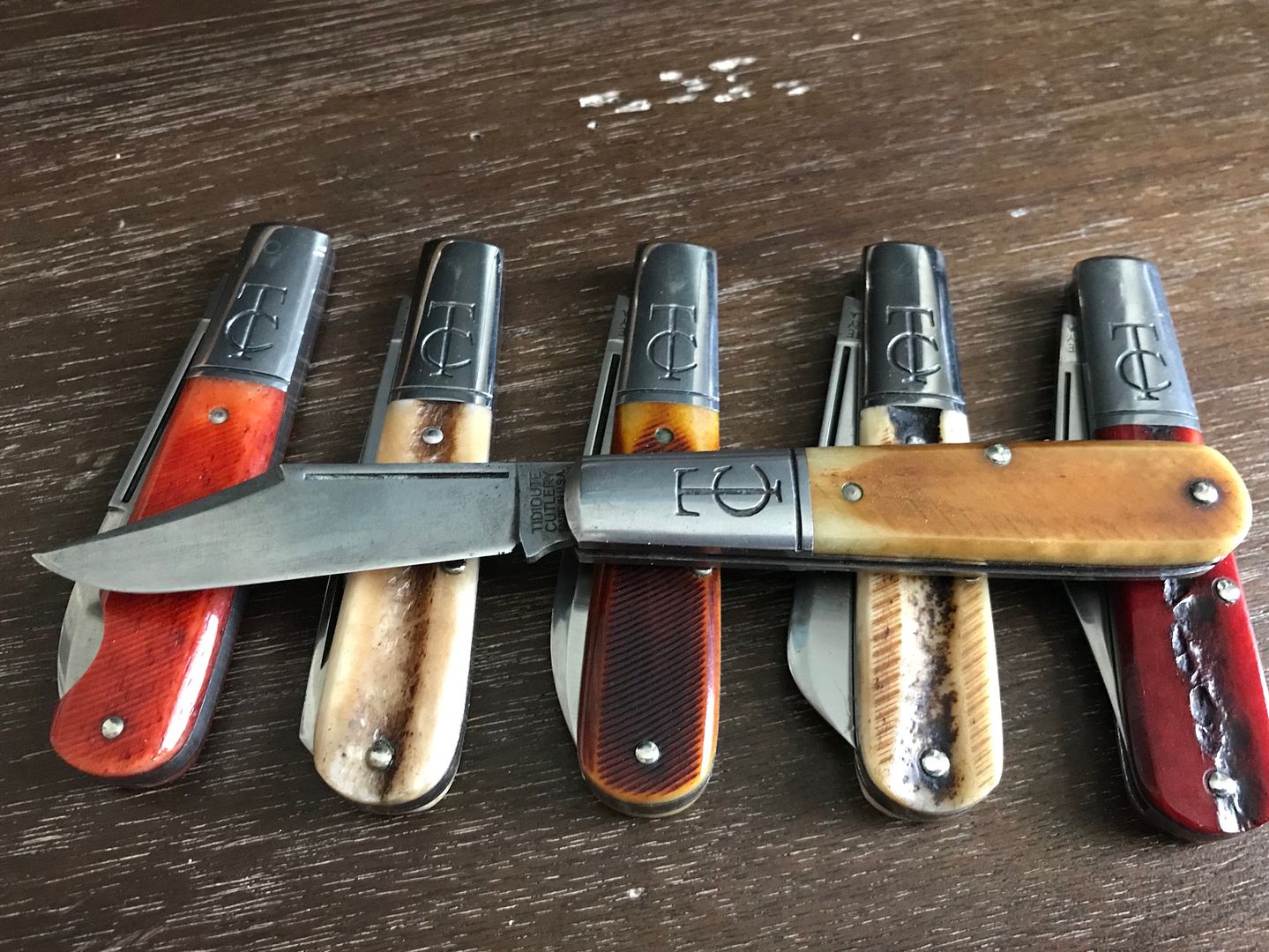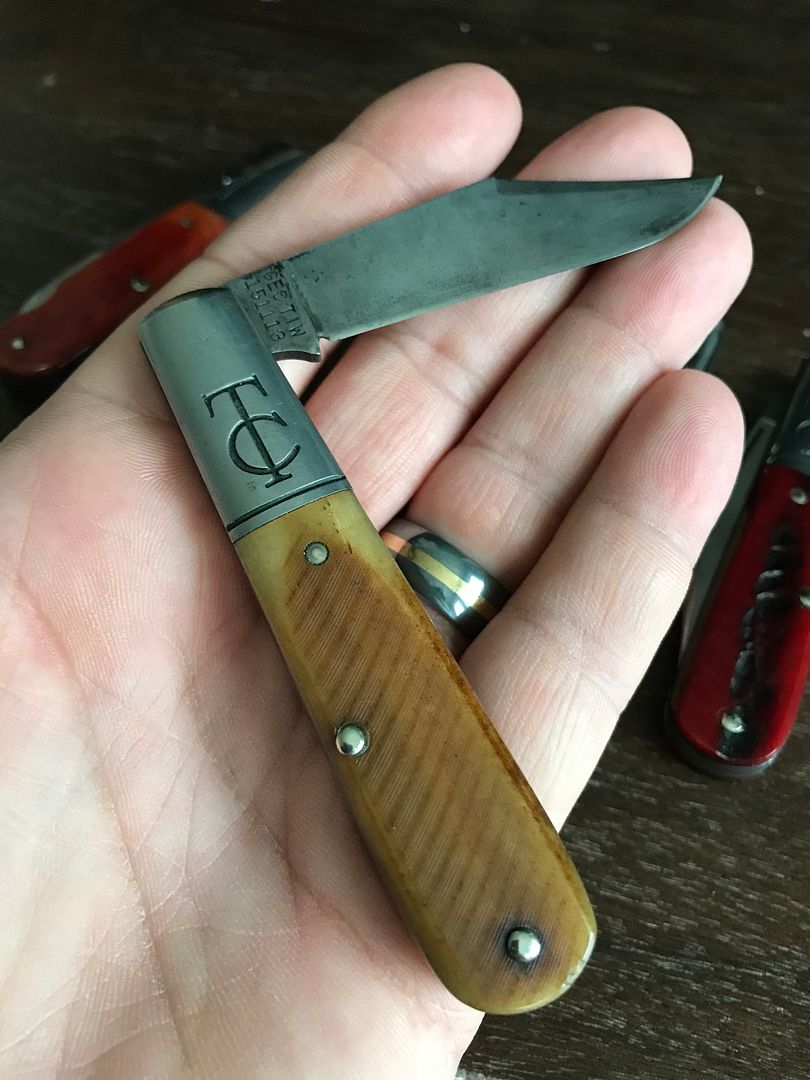- Joined
- Jul 21, 2018
- Messages
- 2,149
Thank you very much!
You are most welcome, thank you for sharing. Can you tell me more about the sawcut spearpoint at far left, I don’t recall seeing that hue before...2013?
Last edited:
The BladeForums.com 2024 Traditional Knife is available! Price is $250 ea (shipped within CONUS).
Order here: https://www.bladeforums.com/help/2024-traditional/
Thank you very much!
Both are breathtaking but Evan's checkering is other worldly...


IMHO your Stag knife is not a Barlow . I have always had the same opinion as you do except for the Grand Daddy Barlows . Still a nice looking knife my friend .What makes a good traditional barlow? I guess 930 pages here can attest to that. I could also probably use the search function and maybe find an answer or argument to my question, which is......
Would this knife be considered a barlow? It is billed as such by the manufacturer but I’ve thought that the bolster should be 1/3rd the length of the handle.


BTW,philllll that checkered TC is incredible!!
Would this knife be considered a barlow? It is billed as such by the manufacturer but I’ve thought that the bolster should be 1/3rd the length of the handle.
 That gave me the "warm and fuzzies" inside just look'n at it
That gave me the "warm and fuzzies" inside just look'n at itHey I have one of them wonderful checkerd's as well from Evan. Mine is your famed Walnut Gunstock CharlieMine is bone, JP. Incredible grip!!
Philllll?
 It has several special things tied to it. #1 Gunstock Walnut of your fathers #2 the knife was a gift from Duncan and #3 artisan checkering by Evan
It has several special things tied to it. #1 Gunstock Walnut of your fathers #2 the knife was a gift from Duncan and #3 artisan checkering by EvanYou know the rules, Paul!!Hey I have one of them wonderful checkerd's as well from Evan. Mine is your famed Walnut Gunstock CharlieIt has several special things tied to it. #1 Gunstock Walnut of your fathers #2 the knife was a gift from Duncan and #3 artisan checkering by Evan

For a first try that is quite amazing, and I think not being 100% perfect, and that the tops of the "diamonds" being more flat really,really fit that ancient wellI agree with you David - that is a killer improvement on a TC!! One of Evan's triumphs IMO!!
View attachment 1075258 View attachment 1075259
Here is the first one that Evan experimented on, a used and patina-ed Ancient. Not as perfect and wonderful as Phil's, but not bad!!

Very nice collection Drew. Congratulations on catching your white whale.Didn’t think I would ever get to create this post... Grail achieved, white whale caught. Amber sawcut single clip : )


Used but not abused and going straight in the pocket : )
